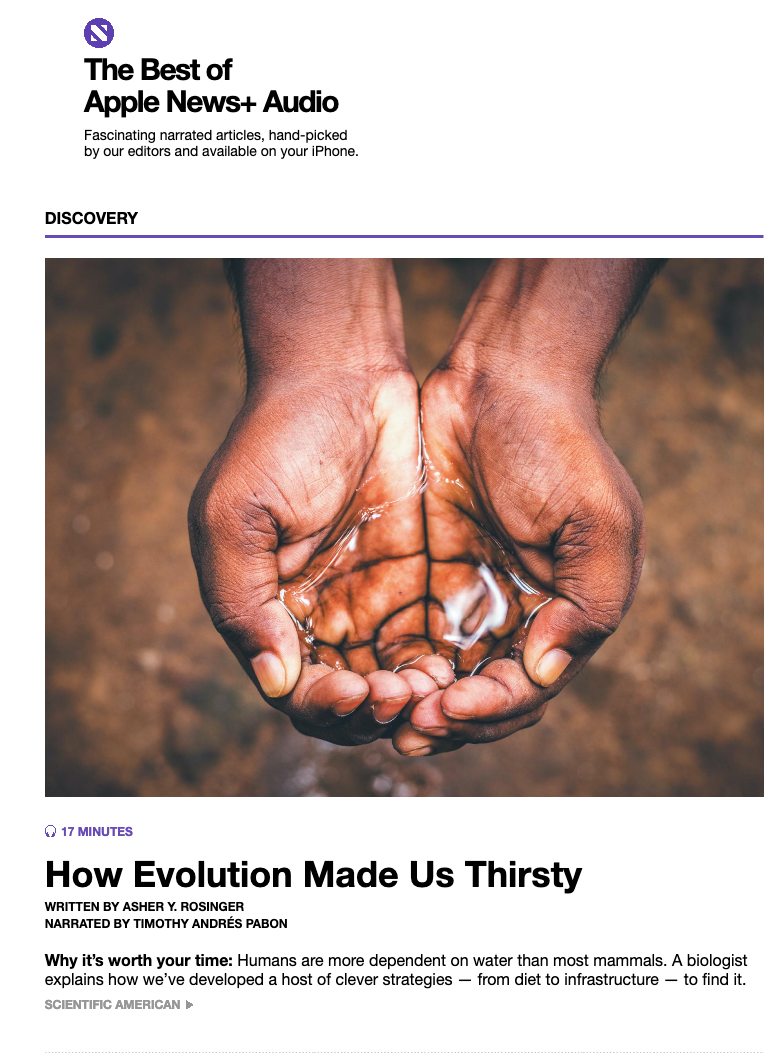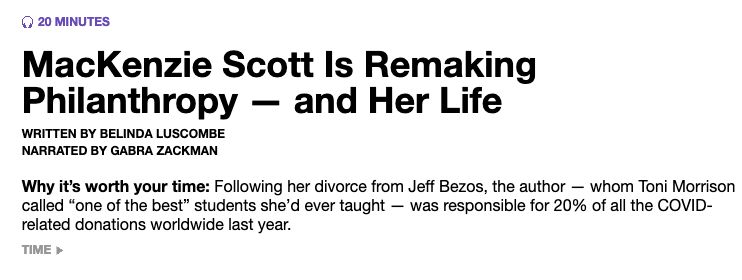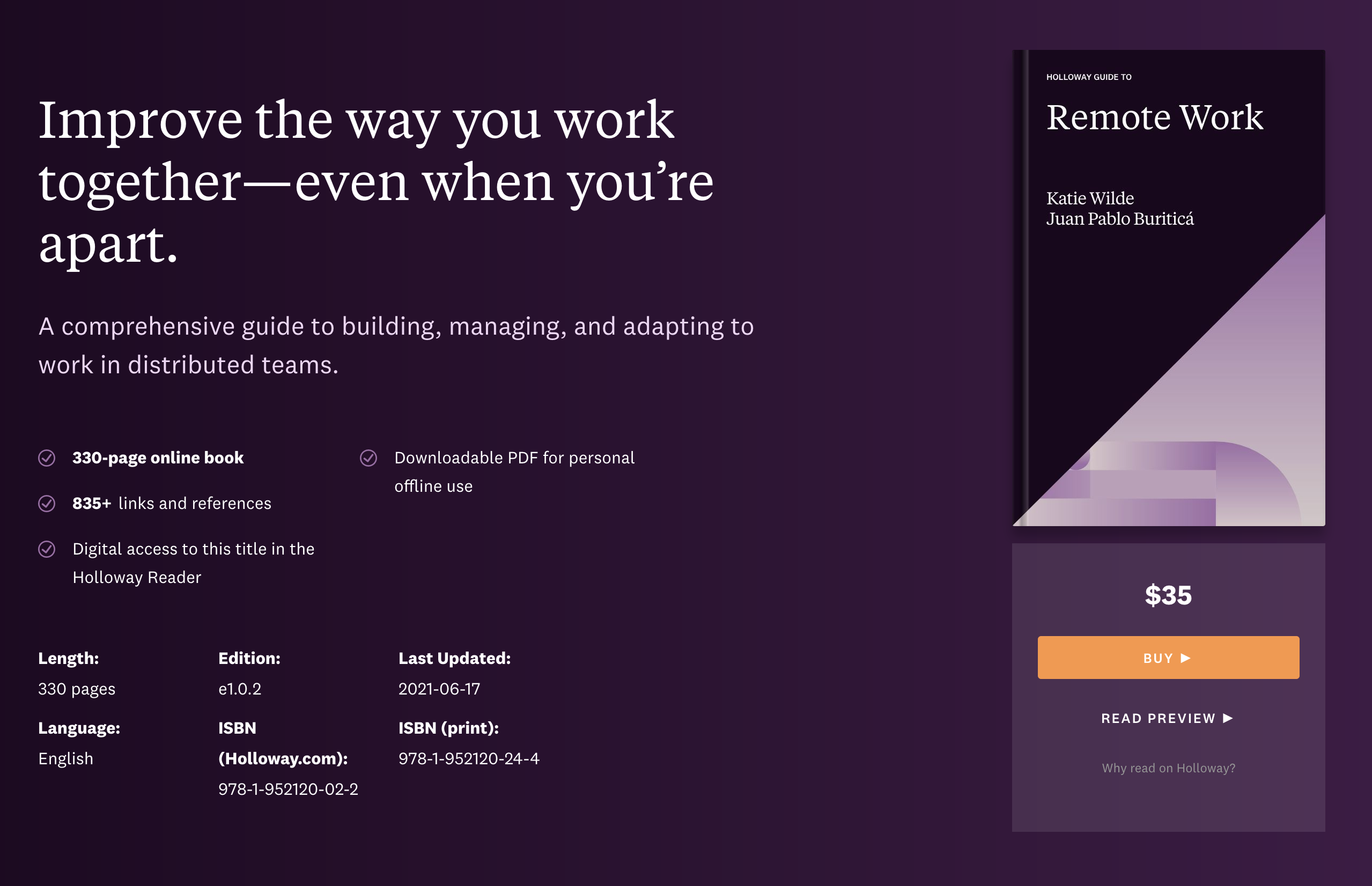
On the use of persuasion techniques to convert
Most SaaS products employ persuasion techniques to convert visitors. Yet, many of these ideas have not been implemented in news products. Until, Apple News.
Apple News’ use of persuasion
Apple News Plus Audio Newsletters write a crisp 2-3 line “why it’s worth your time” sales pitch for every long read. Here’s how it looks:

Below are 14 more sales pitches from various Apple News Plus Audio newsletters.

.
Holloway treats editorial products as software and makes persuasive pitches.
Holloway sells well-researched digests on a variety of topics.

They have taken the art of pitching editorial products to the next level.
- Attention: They establish relevance with a crisp headline and 1-line summary
- Interesting Facts: Remove doubt from the audience’s mind about what’s inside
- There is a 300-word summary of a 330-page book.
- They follow it up with interesting facts about the product like length, level of research done, how you can access it, etc.
- A detailed table of contents tells that audience what is inside.
- For deeply interested audiences, they also give away few chapters.
- Desire:
- They use reviews and testimonials to build social validation.
- They showcase the number of people who have poured in time and effort to get this right.
- I especially like their ‘Does this sound like you?’ part of the pitch. Here, Holloway has listed a few sentences articulating the problem that customers might be facing. This communicates that Holloway understands the problems that the customers face.
- Finally, they present a Call to Action.
That’s much copywriting work for a $35 ebook. What’s more interesting from both case studies is that they create demand without revealing the actual product.
News products employ persuasion too!
Do news products publish persuasive messaging? No.
Is persuasion employed within the newsroom daily? Yes.
Reporters, writers, and contributors employ persuasion every time they pitch stories to the editor. In this post, Business Insider’s Head of Video summarizes the pitch down to ‘Why now?’ or ‘So what?’ of a story.
When an editor asks a certain columnist to write about a particular topic, that’s a data point that could be used to pitch. In fact, every single decision that editorial teams make has an implication for the audience. In this article, I list few other choices that the editorial team takes.
On a lighter note, a few months ago, I saw an anti-pitch. At the peak of the second COVID wave in India, when lakhs of people died, a Cable TV news channel had Chetan Bhagat, a novelist, commenting on vaccine availability. 😒
Persuasive sales pages work. The websites of 90% of SaaS products look the same because they all use the best practices from persuasion and cognition that work.
So, why aren’t newsrooms publishing persuasive sales pages?
But before asking this question, I ask this question to myself. Looking back, Pykih, the web development agency that I founded and ran, never wrote persuasive case studies. We built websites and data visualizations for big global brands but never managed to build a meaningful web presence for ourselves.
Pykih had implemented an oral culture. Everything was transmitted directly from me to the team. By the time the team completed the work and it was time to write a case study, I was already two or three projects ahead. As a result, most nuances that resulted in why certain decisions were taken were forgotten.
I suspect a similar situation exists in newsrooms. News teams are so busy staying on top of the news and shipping out stories that they have not implemented a written culture. Because of this, most elements of a persuasive pitch remain as oral conversations.
Eventually, when the story reaches the desk and social media team for packaging and publishing, they do not have the context of the editorial decisions that led to this story. Instead, they look at the finished product and then write what could best be described as a summary, not a pitch — “Why it’s worth your time.”
Have you seen editorial products employ persuasion to drive up conversions (traffic or revenue)? If yes, can you please tweet me those examples?
Personal Context
Last year, I presented a working paper at Poynter’s Global Fact 7 on what makes misinformation persuasive on WhatsApp. Unfortunately, before I could complete the paper and submit it to a journal, I sold off my 50% shares in PROTO and exit. Here’s the video of the presentation on IFCN’s channel.
What stayed with me was learning from the extensive reading that I had to do on persuasion and cognition. The hangover from that reading is another reason why this blog was named ‘Design for Cognition.’
Since then, I’ve been observing persuasion techniques everywhere, from advertisements and investment pitches to my five-year-old’s attempts at getting her way. And then, I noticed it again, but this time for news and journalism stories. 🤯
